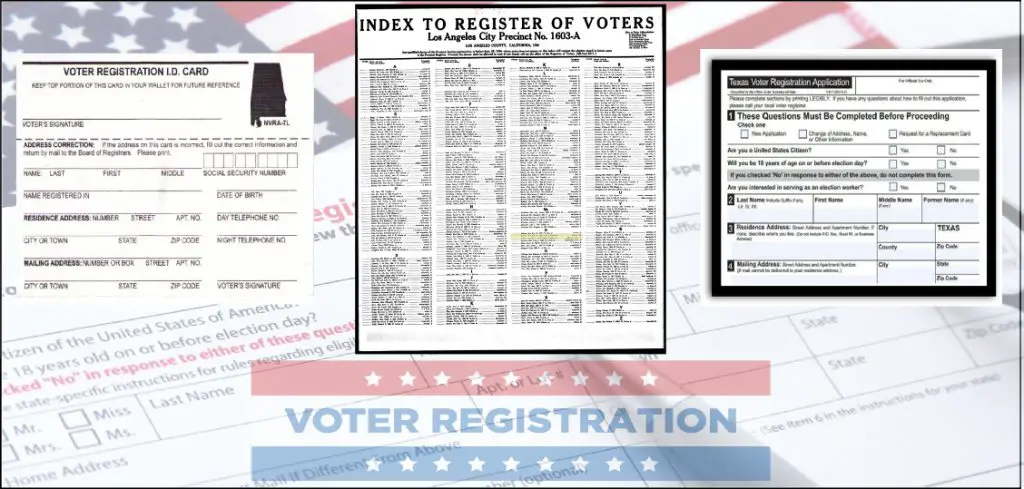
Voter registration records are available online and offline from all over the world and are what I consider a hidden gem of information that can assist you in advancing your family history and genealogy research.
Here are several reasons why voter records are such a wonderful tool for researching (and finding) ancestors:
-
They fill in the gaps between censuses – in the ten years between censuses – people move, they die, they get married, etc. The advantage of voter registration records is that they can tell you their address, their occupation, etc. And like city directories, they are published yearly or every couple of years.
-
Naturalization information – in some records from the 1800’s, the date and place of naturalization is included, which can provide leads for obtaining their detailed naturalization records.
-
Middle names – often a complete name is included in voter registration records – in fact the only place that I ever found my great grandfather’s middle name was in several of these records. Prior to finding them, i only knew his middle name as an initial.
-
You can find a spouse – after 1920 for all of America, women could vote – so at that time their names began to show up in Voter Registration records. Some states had passed women’s suffrage laws prior to 1920, but just a few. To be complete – women in some states in the late 1700’s had voting rights until they were all taken away by 1807. The given name of a woman is sometimes included in the voter registration record.. If a man and a woman with the same last name lived at the same address on the registration list, one could surmise that they were married to each other or they could be siblings or have a parent-child relationship. But there is a good possibility that they may be married to each other, providing more clues.
-
Nativity – again in the 1800’s, the place of birth is entered, which is especially helpful for finding naturalized immigrants.
-
Physical Characteristics – in a few states, the voter registration form includes the applicants age, height, complexion, eye and hair color, as well as any distinguishing marks or scars.
-
Political party or affiliation – usually abbreviated as Dem or Rep, but you will find other party names as well in addition to “None”. Remember that Democrats and Republicans from years ago did not necessarily align with the same principles as the parties do today.
-
Migration – a few voter registration forms include a question regarding how long the voter lived in the state, the county, and the precinct. This can be useful to determine when they moved, which can help determine their whereabouts for additional research.
Most of the voter registration records are still in paper form or have been microfilmed. There is quite a bit online though, and I am capturing those links and they are below. The paid subscription sites such as Ancestry, Fold3, My Heritage, and FindMyPast have voter registration collections also.
Below, listed by state are links to voter records available online. Unfortunately, some just list the voter’s name. Although that is sparse information it can help you find a person’s residence at a certain point in time, again helpful to find where ancestors resided between the census years.
- Free Alabama Online Voter Records
- Free Alaska Online Voter Records
- Free Arizona Online Voter Records
- Free Arkansas Online Voter Records
- Free California Online Voter Records
- Free Colorado Online Voter Records
- Free Connecticut Online Voter Records
- Free Delaware Online Voter Records
- Free District of Columbia Online Voter Records
- Free Florida Online Voter Records
- Free Georgia Online Voter Records
- Free Hawaii Online Voter Records
- Free Idaho Online Voter Records
- Free Illinois Online Voter Records
- Free Indiana Online Voter Records
- Free Iowa Online Voter Records
- Free Kansas Online Voter Records
- Free Kentucky Online Voter Records
- Free Louisiana Online Voter Records
- Free Maine Online Voter Records
- Free Maryland Online Voter Records
- Free Massachusetts Online Voter Records
- Free Michigan Online Voter Records
- Free Minnesota Online Voter Records
- Free Mississippi Online Voter Records
- Free Missouri Online Voter Records
- Free Montana Online Voter Records
- Free Nebraska Online Voter Records
- Free Nevada Online Voter Records
- Free New Hampshire Online Voter Records
- Free New Jersey Online Voter Records
- Free New Mexico Online Voter Records
- Free New York Online Voter Records
- Free North Carolina Online Voter Records
- Free North Dakota Online Voter Records
- Free Ohio Online Voter Records
- Free Oklahoma Online Voter Records
- Free Oregon Online Voter Records
- Free Pennsylvania Online Voter Records
- Free Rhode Island Online Voter Records
- Free South Carolina Online Voter Records
- Free South Dakota Online Voter Records
- Free Tennessee Online Voter Records
- Free Texas Online Voter Records
- Free Utah Online Voter Records
- Free Vermont Online Voter Records
- Free Virginia Online Voter Records
- Free Washington Online Voter Records
- Free West Virginia Online Voter Records
- Free Wisconsin Online Voter Records
- Free Wyoming Online Voter Records
Good Luck and Happy Hunting!